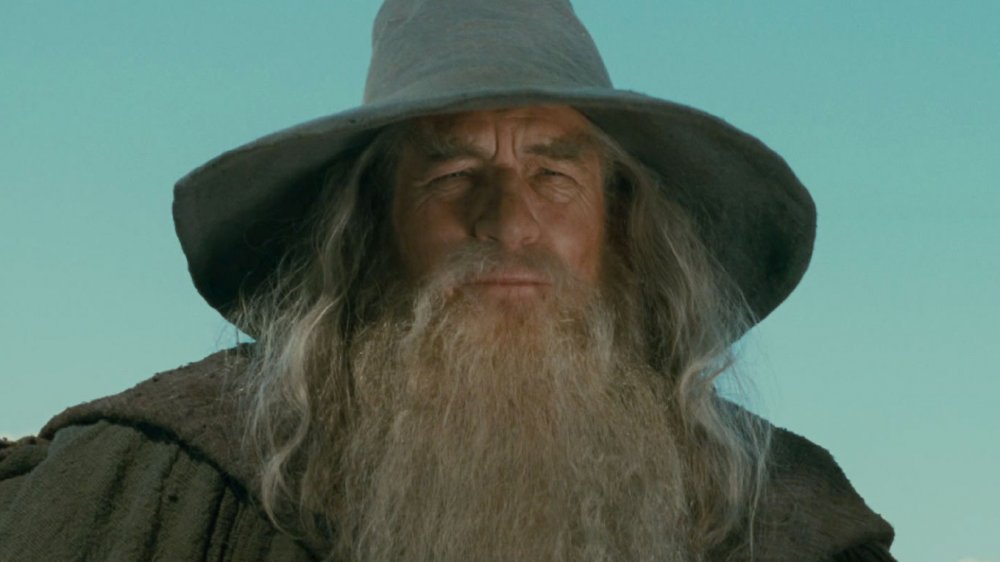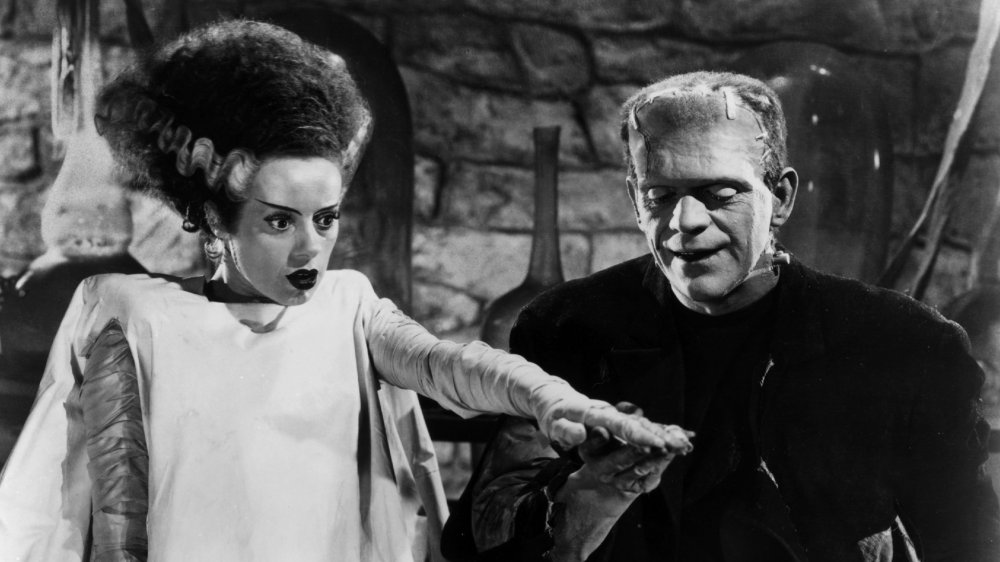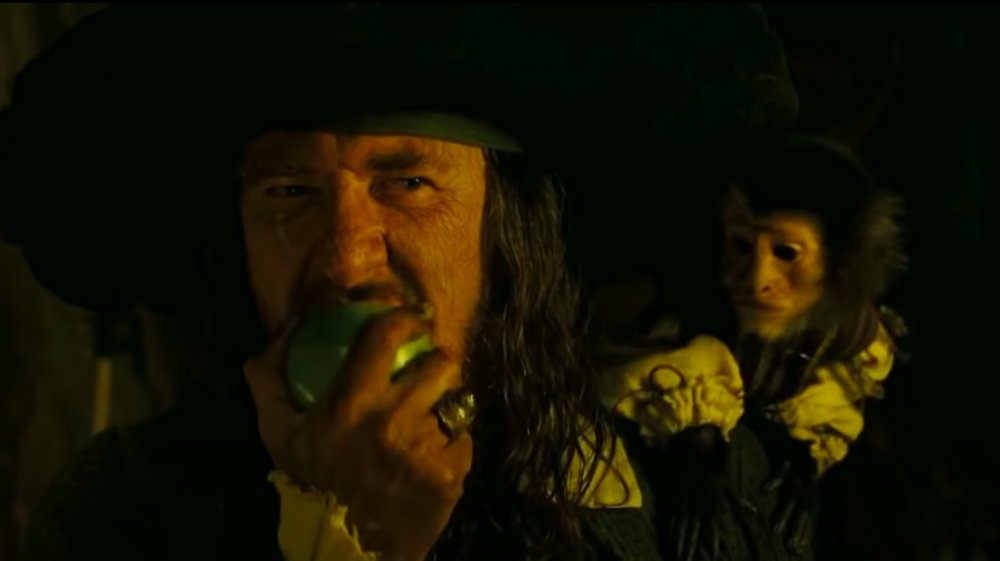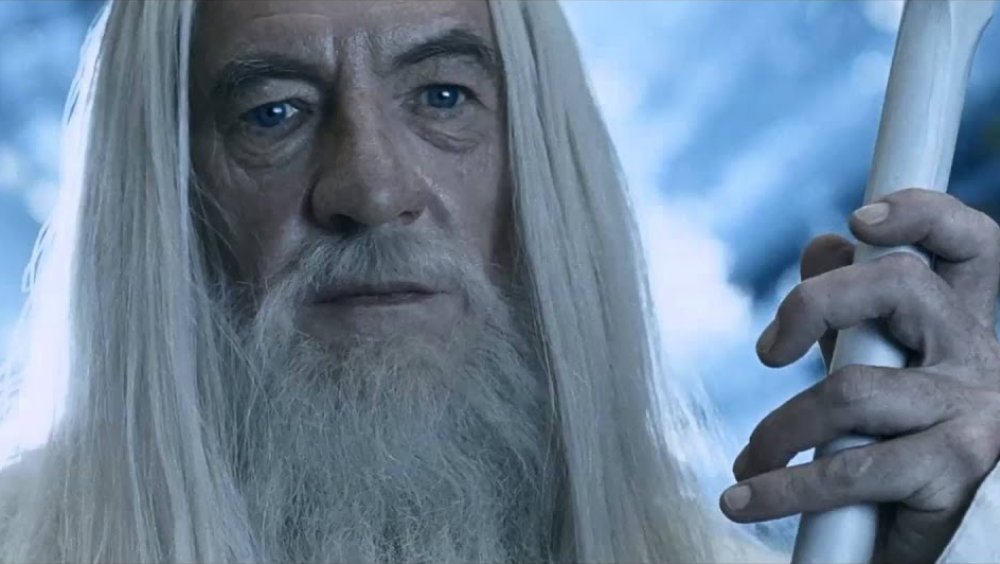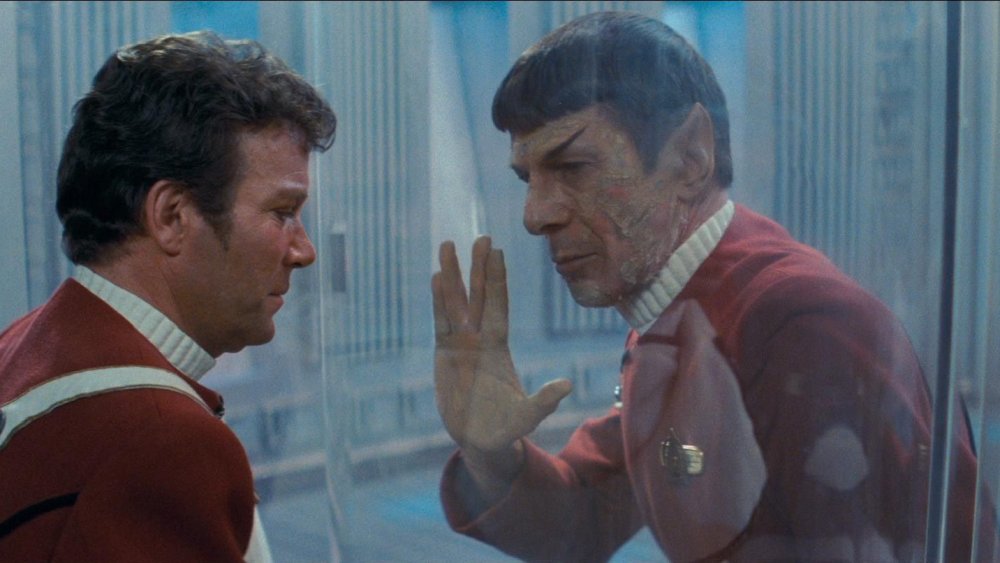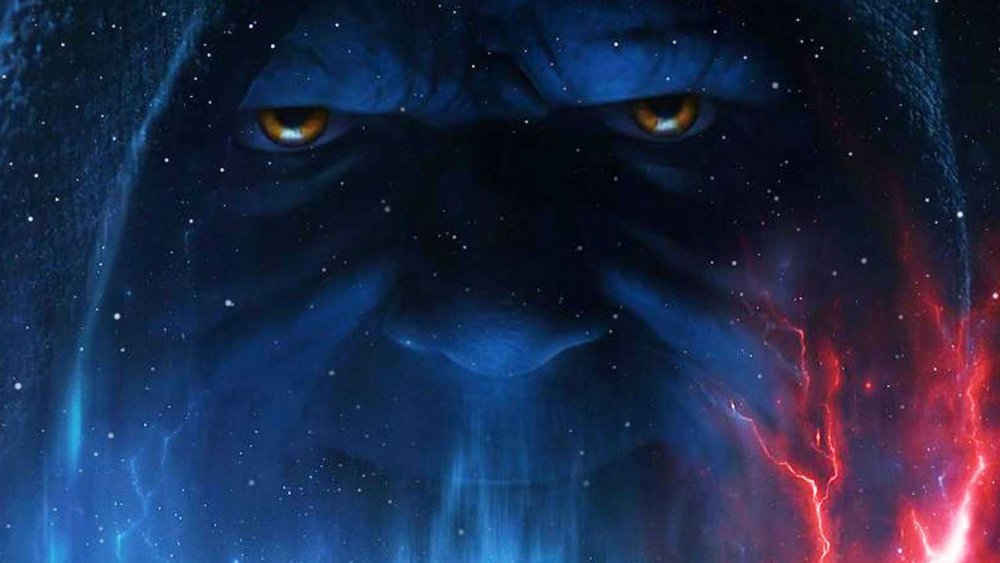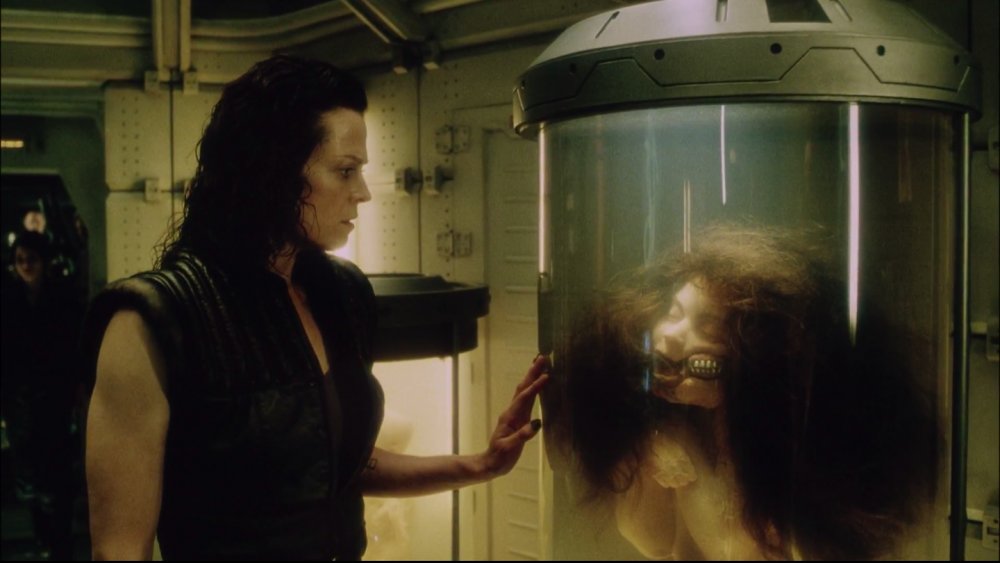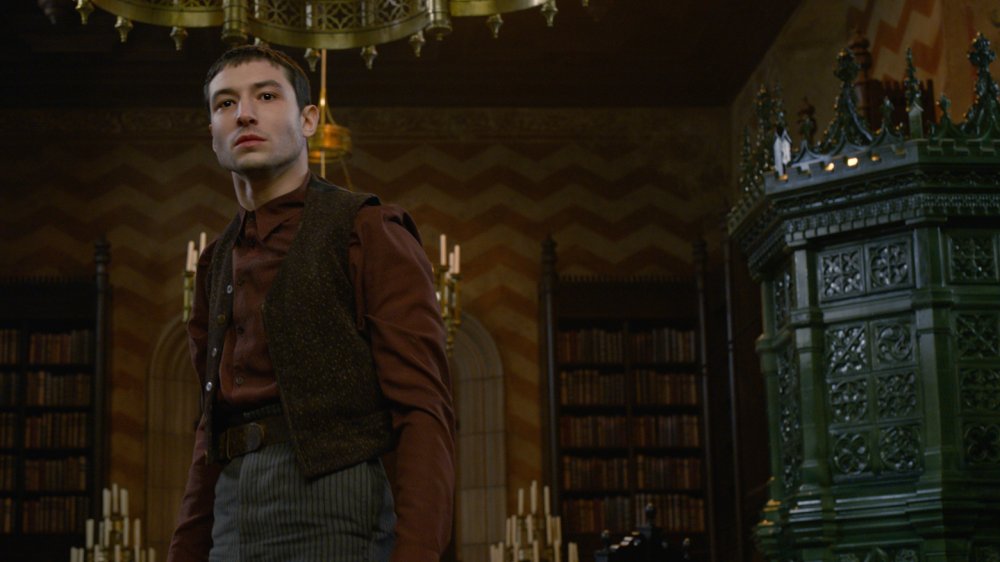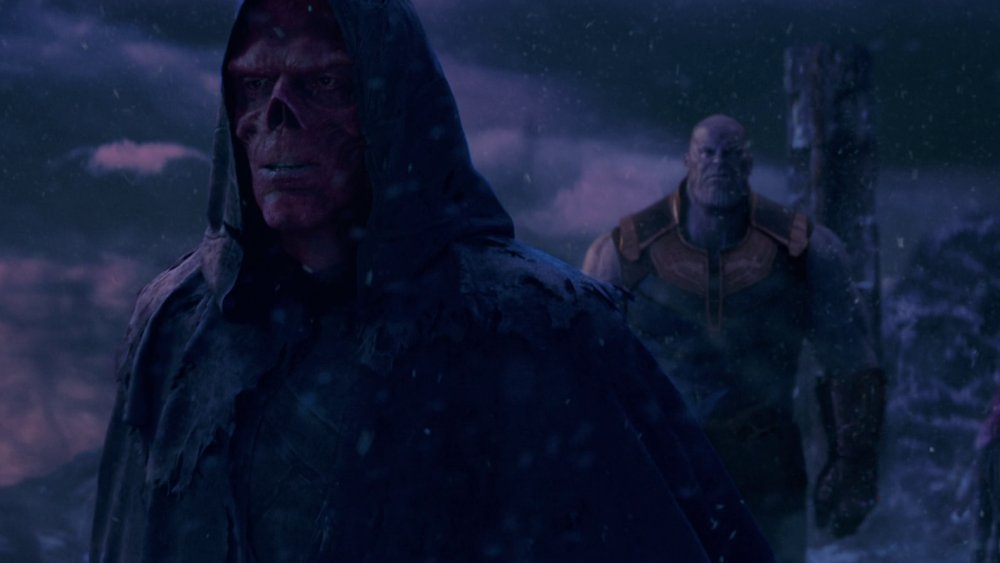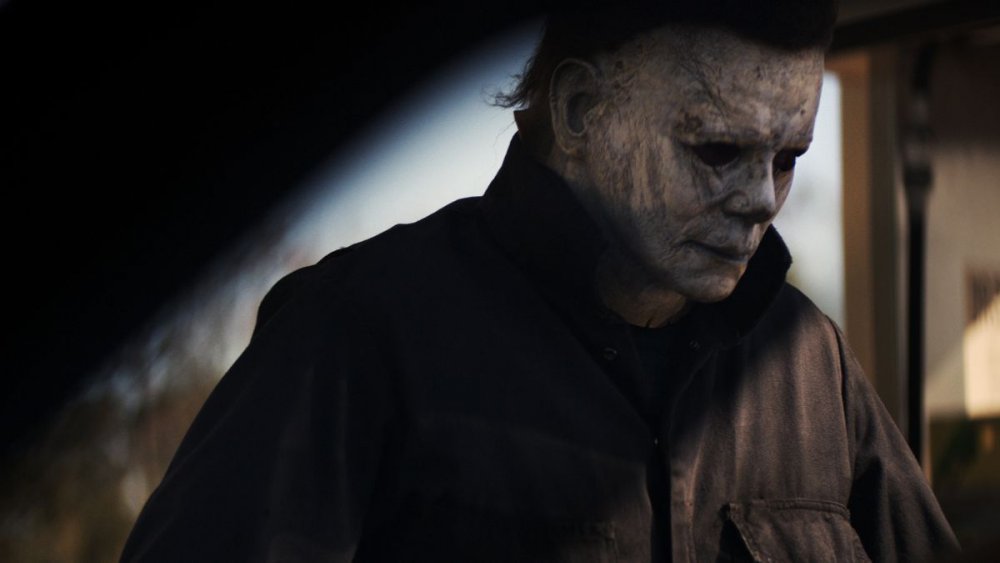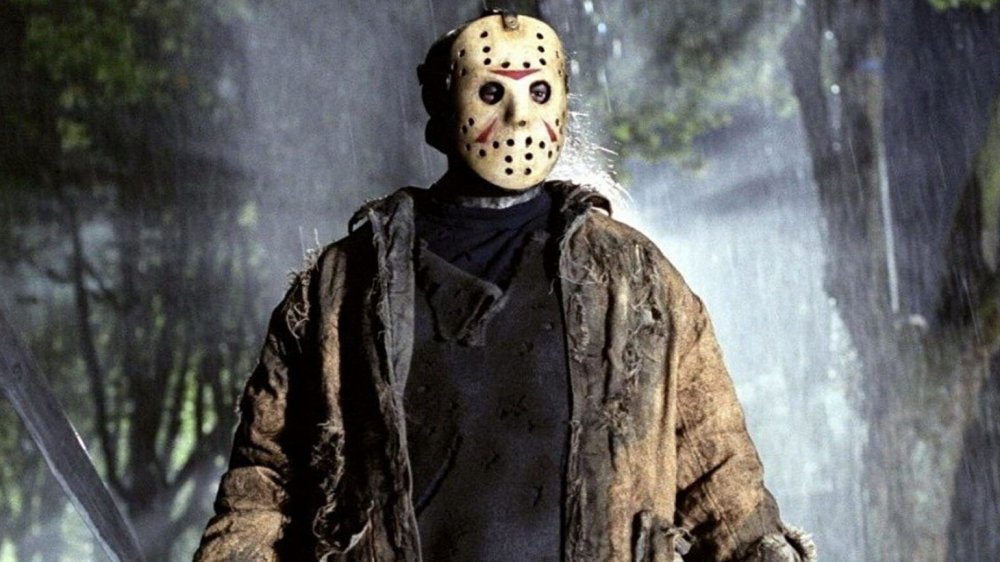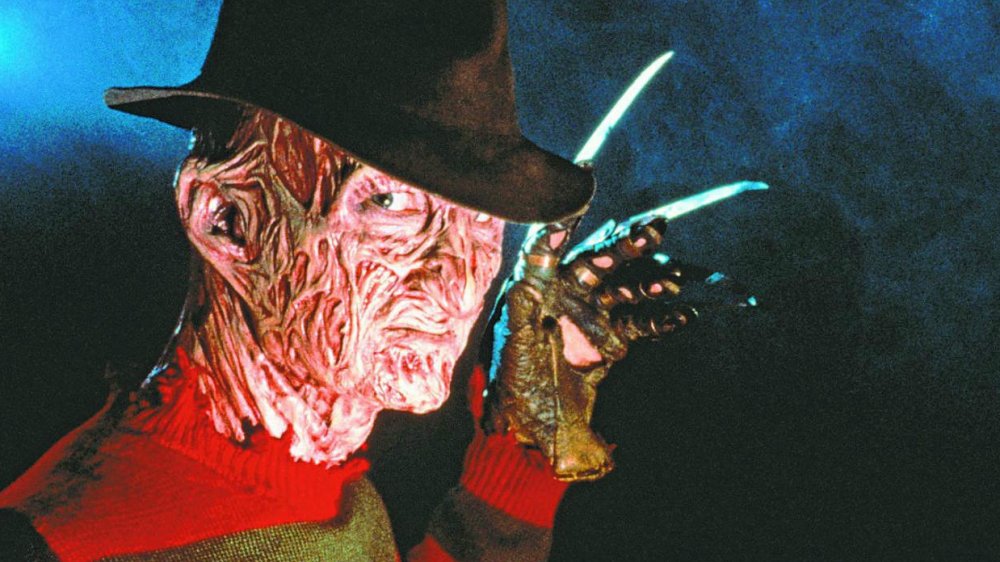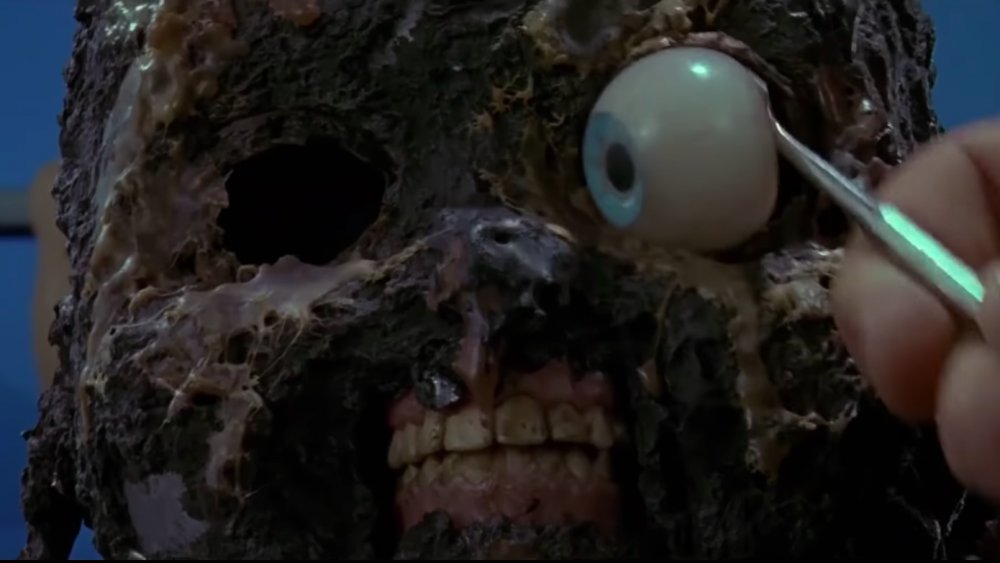Movie Characters Who Were Brought Back To Life For Sequels
We often hear that death is not the end. There's no place that's more literal than the movies. Characters have been shot, stabbed, frozen, fried, blown up, beheaded, set on fire, and had their ashes scattered to the four winds, often with great ceremony ... but as long as studios think audiences want to see more of them, they'll always find some way to bring them back to the land of the living. Secret parachutes carry passengers to off-screen safety. Previously unknown identical twins crop up. Outright resurrection isn't unheard of, if the movie in question runs on magic. Whatever the way they return, these beloved figures are hauled out of the abyss of death and back into the limelight. These are 12 of the best, worst, and outright strangest ways sequels have brought characters back from the dead. Some are convincing, some very much aren't, and some are just plain weird.
Frankenstein's Monster
Resurrected characters can be found in one of the first franchises Hollywood ever made: The 1930s Frankenstein films. James Whale's 1931 classic ends with the Monster's apparent death, as an angry mob traps him in a burning windmill. The success of the film spurred a sequel, 1935's Bride of Frankenstein – which necessitated a reversal of the Monster's fortunes.
Bride of Frankenstein opens with Frankenstein's creator, Mary Shelley, explaining that the story isn't finished yet. We then see Boris Karloff as the Monster crawling out of the wreckage, burned but alive. The movie ends with him pulling a switch in his creator's lab, as the mad scientist Dr. Pretorius warns him, "We'll be blown to atoms!" It's almost like Whale is trying to one-up himself — or maybe, since this was his last Frankenstein movie, to kill the character so completely no one else could continue his story.
If so, it didn't work. 1939's Son of Frankenstein reveals the Monster still alive in the ruins of the lab, if just barely. Baron Wolf Von Frankenstein brings him back, only for the Monster to fall into a pit of burning sulfur. This, of course, does not stick either — plenty more Frankenstein movies followed, as did hundreds of other movie monsters that never actually seem to stay dead.
Captain Barbossa
Ask a younger generation of movie buffs about character resurrection, and a lot of them will think of eight words: "So tell me, what's become of my ship?"
As Captain Hector Barbossa, Geoffrey Rush doesn't just go from dead to living, but from evil to good as well. In Pirates of the Caribbean: The Curse of the Black Pearl, we learn that an Aztec treasure cursed him and his crew to walk the earth long past their deaths, their true nature as undead corpses revealed by moonlight. He's finally released from his curse when he adds the missing piece of treasure to the others — just in time for Johnny Depp as Captain Jack Sparrow to shoot him dead.
But in the Pirates universe, there's more than one way to beat the reaper. After Jack himself dies in the sequel, Dead Man's Chest, his crew goes to the shack of the mysterious Tia Dalma to hold a wake. She reveals she knows an experienced guide who can sail them through the seas beyond the grave ... and Barbossa walks down the stairs. Sure enough, he guides the crew to Davy Jones' Locker in At World's End and brings Jack back with him. Despite his early death, he ends up becoming the only primary character to appear in every installment of the series — until he gets killed all over again in Dead Men Tell No Tales.
Gandalf
If there's any 21st-century resurrection more iconic than Barbossa's, it's Gandalf's, as portrayed by Ian McKellen in The Lord of the Rings: The Two Towers. Gandalf doesn't just get a return, he gets an upgrade too: His masters bring him back with all the powers that had belonged to Saruman, before he lost them by siding with Sauron. Once he was Gandalf the Grey, but now, he is Gandalf the White.
Director Peter Jackson plays up the drama to tremendous effect: Gandalf's death scene, in which he bellows at the towering, demonic Balrog that it "shall not pass," is unforgettable. Jackson also carefully filmed Gandalf's return to catch new Rings fans off guard, as Legolas warns his companions "the White Wizard approaches." Certain he means Saruman, they prepare for battle, the audience misdirected right along with them. Then, the wizard appears with his face hidden by blinding light ... only to resolve into Gandalf.
Spock
Before either Barbossa or Gandalf bit the dust, one of the biggest deaths in nerddom was that of Spock in Star Trek II: The Wrath of Khan. Leonard Nimoy's Spock had always been a fan favorite character: His total commitment to reason and struggle with human emotions struck a chord, to the point that his name is synonymous with logic to this day.
In this movie, Khan activates the Genesis device, a machine so powerful it can reorganize an entire planet at the subatomic level. Spock dies of radiation poisoning while repairing the ship so it can get to safety, and gets a full funeral with his coffin launched into space, which seems about as final a death as you could ask for. Not so: In Star Trek III: The Search for Spock, we learn that when Spock's body landed on the new planet formed by the Genesis device, it re-formed him too. His consciousness, however, has been transferred to Dr. McCoy. Thus, the Enterprise crew has to save Spock from the collapsing planet and reunite his mind and body. You won't be shocked to learn that they accomplish this, bringing Spock fully back to life by the movie's end.
Emperor Palpatine
While many fans love character resurrections, just as many think they're terrible. For a recent example, consider Emperor Palpatine's resurrection in Star Wars: The Rise of Skywalker. Played by Ian McDiarmid, Palpatine first appears in The Empire Strikes Back as the shadowy puppet master of the Galactic Empire before appearing in the flesh in Return of the Jedi. Though he attempts to bring Luke Skywalker over to the Dark Side, he is unsuccessful, getting thrown down a bottomless pit by Darth Vader for his trouble.
That seemed like the end of it — and it was, until the first Rise of Skywalker trailer closed with Luke's words, "No one's ever really gone," and the Emperor's familiar, raspy laugh. As the release date approached, fans waited expectantly to see how he'd come back in a series that had mostly avoided reviving characters from the dead. In the end, the only explanation we get amounts to, "Somehow, Palpatine has returned." Many fans were, unsurprisingly, displeased.
But his return to the living didn't annoy fans as much as what he does when he gets there. He reveals he is Rey's grandfather — a twist so bizarre, YouTube critic Jenny Nicholson had predicted it entirely as a joke.
Ripley
Alien 3 is one of the most divisive movies in the series. But if there's one thing its detractors and defenders agree on, it's that it's a cruel, grim piece of work — the only disagreement is whether that's good or bad. This mean streak carries to the end, when Ripley burns herself alive to destroy the alien gestating inside her before the Weyland-Yutani corporation can weaponize it. Even more than Frankenstein getting "blown to atoms," it feels like director David Fincher's attempt to make sure both Ripley and the franchise are good and dead.
It didn't work any better for him than it did for Whale. Five years later, Ripley came back thanks to cloning in the appropriately-named Alien: Resurrection. But she isn't quite the Ripley we know — she's been combined with the creature, and Weaver's bug-eyed, emotionless performance is truly alien.
Director Jean-Pierre Jeunet handles the resurrection with the dark, twisted humor he'd shown off in earlier films like Delicatessen and City of Lost Children. A scene in which Ripley discovers the grotesquely mangled clones who preceded her is particularly memorable. There's definitely a cynical meta-joke to Ripley being brought back by greedy creeps who refuse to let her die, just so they can squeeze more money out of her ... but how you feel it lands depends on how you feel about the movie as a whole.
Credence Barebone
Whatever you might think of these explanations for characters' return trips from the great beyond, at least they get an explanation at all. Not every character does: Take Ezra Miller's character Credence Barebone from the Fantastic Beasts series. In these Harry Potter prequels, Eddie Redmayne plays Newt Scamander, a "magizoologist" who arrives in New York to discover it's being terrorized by a ball of dark magical energy called an Obscurus, caused by repression of magical abilities. He eventually learns it's attached itself to Credence, the adopted son of an anti-magic crusader. Newt confronts Credence in the subway tunnels and tries to peacefully talk him down, but a bunch of American wizards barge in, wands blazing. They don't just kill Credence — they obliterate him, leaving nothing behind but a cloud of dust.
Nevertheless, a British Ministry of Magic official informs Newt in The Crimes of Grindelwald that Credence survived. And if you want to know how, you're out of luck. It's all happening in a universe with magic, so naturally, one can just throw their hands up and accept "it's magic!" as an explanation. But still, questions linger ... and no answers seem likely to arrive.
The Red Skull
Some characters have to wait years to return. In Captain America: The First Avenger, Hugo Weaving — no stranger to cinematic resurrections after playing Agent Smith in the Matrix series — plays the Red Skull, a Nazi officer whose experiments gave him superhuman strength and flayed the skin from his face. He uses the mystical Tesseract to power his collection of space-age weapons, until Cap knocks it out of its casing and the Red Skull tries to hold it in his bare hands, disintegrating him.
A year later, in The Avengers, we learned that the Tesseract is actually the Space Stone, and that it works by opening wormholes in space. Comics-savvy viewers (if death is less permanent anywhere than the movies, it's in comic books) immediately guessed that the Red Skull hadn't been killed, just sent elsewhere. It took six years, but those guesses were confirmed in Avengers: Infinity War, when the murderous Thanos arrives on the planet Vormir looking for the Soul Stone. He's greeted by a hooded figure, who reveals a familiar red face. Red Skull explains that the Tesseract transported him there, and since he didn't love anything or anyone enough to sacrifice to the Stone, "[he guides] others to a treasure [he] cannot possess."
Michael Myers
No genre loves bringing characters back from the dead as much as slasher horror does. This tradition goes back all the way to 1978's Halloween, and its memorable monster, Michael Myers. That movie leaves his death uncertain, with the final shot showing his corpse has disappeared. Sure enough, he's back to killing again in Halloween 2, and later sequels find more and more outlandish ways to bring him back.
None of them, however, quite top the total inexplicability of Halloween: Resurrection. The previous movie, Halloween H20: 20 Years Later, ends with Laurie Strode (Jamie Lee Curtis) straight-up hacking Myers' head off so hard, it goes flying. How do you come back from that? Well, according to Resurrection, that beheaded body isn't Michael at all. A flashback explains he switched clothes with a paramedic before Laurie caught up with him and had gotten away in disguise. It works better than it has any right to — "Michael" grabs at his mask at one point as if confused why he's wearing it.
But there are a lot of things this doesn't explain. For starters, why would the paramedic lunge at Laurie as soon as he wakes up in the body bag where Michael supposedly left him? And why, through the whole thing, but especially when Laurie's coming at him with an ax, does he never think to just take the mask off and explain she's got the wrong guy?
Jason Voorhees
Friday the 13th's Jason Voorhees has been cheating death from the beginning. First-time viewers get a huge shock when they learn that the killer in the first movie isn't him, but his mother Pamela, getting revenge for his death as a child. But he's already back by the end of that film, when his waterlogged corpse jumps out of Crystal Lake to attack the lone survivor of Pam's rampage.
Part 2 introduces the adult Jason and reveals he'd been living in the woods since his apparent death, before killing him again with a machete. But of course, that movie made enough money to justify a part three, and from then on, the series never lets him stay dead. The Final Chapter reveals he'd somehow survived an ax straight to the head ... before killing him again. He stays dead through A New Beginning, before coming back in Jason Lives when a survivor's attempt to make sure he's really most sincerely dead backfires, and brings the dude back to life once more.
Things get even weirder in Jason Goes to Hell: The Final Friday. Jason reappears with no explanation after getting dissolved by toxic waste in Jason Takes Manhattan, just to get killed again by FBI agents a few minutes in. That doesn't slow him down long, and he spends the rest of the movie jumping from body to body, as his heart is passed around.
Freddy Krueger
Like Marley in A Christmas Carol, Freddy Krueger was dead to begin with: The original Nightmare on Elm Street has him return from the grave to get revenge on the parents who killed him. But the series is all about finding ways to make sure he stays dead for good ... and none of them seem to work. Even when they really, really should.
In Nightmare on Elm Street 3: Dream Warriors, Neil Gordon, the psychiatrist treating Freddy's current round of victims, learns he can put the killer away for good by dousing his bones in holy water. It seems like our long national Nightmare is over — at least until Nightmare on Elm Street 4: The Dream Master. A kid dreams a dog takes a flaming whiz in the dirt, a pit opens up revealing Freddy's bones, the ankle bone connects to the leg bone ... and that's all the explanation we get.
Freddy's creator, Wes Craven, came up with a much more elegant solution when he returned to the franchise in New Nightmare. Freddy's still dead in the movie universe after Freddy's Dead: The Final Nightmare — but he turns out to be much more than just a fictional character. He's an ancient evil force, now free to enter our reality. He targets original Nightmare star Heather Langenkamp and the rest of the cast and crew, playing fictionalized versions of themselves, before Heather finally banishes him to the world of fiction once again.
Chucky
As serial killer Charles Lee Ray, Brad Dourif first cheats death in Child's Play by using a voodoo ritual he learned from an old accomplice, transferring his soul into a doll. The ending practically dares any sequel maker to find a way to bring Chucky back: He ends up burned to a crisp, has an arm, a leg, and his head shot off, and finally takes a bullet to the heart.
Yet bring him back they did. Child's Play 2 is the most inexplicable return in the series — and that's counting the movie where Chucky comes back from a single drop of blood. It opens with the Play Pals toy company cleaning up Chucky's severed head and building a new doll around it. Why would they do this? According to a Play Pals executive, to prove "some joker at the factory" didn't "tamper with the voice cassettes" and convince his owner he was evil. How does apparently giving Chucky a new voice cassette (we never see the original torso) accomplish this? Why do they add so many other new parts? How do they get a central piece of evidence in a major murder case out of the police locker? Who knows? Chucky's back. That's all that really matters.
